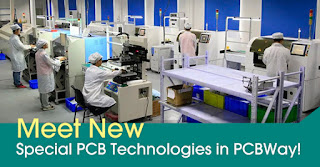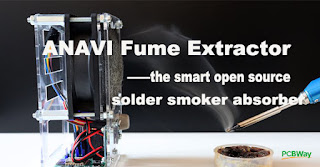Meet New Special PCB Technologies in PCBWay!

As a PCB innovation company, PCBWay is committed to solving the pain points of PCB procurement and meeting customers' various PCB procurement needs - offering special plates such as Rogers, copper substrates, aluminum substrates, and high-frequency high-speed HDI. Recently, with the efforts of the technical department, PCBWay has added many special technologies. 1 Impedance control The resistance encountered by high-frequency signals or electromagnetic waves in the transmission signal lines of electronic components is called characteristic impedance. When the digital signal is transmitted on the board, the characteristic impedance value of the PCB must match the electronic impedance of the head and tail components. Once there is a mismatch, the transmitted signal energy will be reflected, scattered, attenuated or delayed, seriously affecting signal integrity. In this case, impedance control must be performed to match the characteristic impedance value of the PCB to the co




